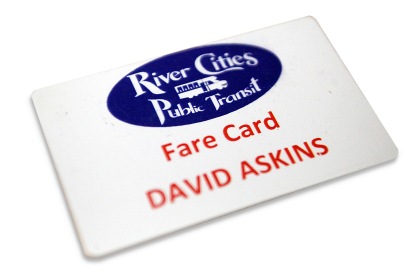Appearing on change.org recently was a petition that calls on Ann Arbor’s public transit board to make it easier for kids to board public buses, and claim the reduced fare to which they’re entitled.
Specifically, the petition calls on the Ann Arbor Area Transportation Authority’s board of directors “to revise its current policy on student fares for K-12 students aged 6-18 by removing the requirement that children show a student ID in order to receive a reduced fare.”

It’s surely worthwhile to answer the question of how to enforce the reduced fare policy—so that it achieves its intended effect of encouraging public bus ridership by young students. Likely to have the opposite effect is an enforcement strategy that requires full fare from young students who can’t produce an ID.
But I think it’s even more worthwhile to ask, independently of the fare price: How do young students pay their fares?
One option is cash. But fumbling with cash is inconvenient—for the person boarding, the driver, and other passengers. Cash transactions contribute to diminished on-time performance, which is one barrier to increased ridership.
An alternative to cash is the AAATA’s 30-Day Value Pass Student (K-12), which can be swiped at the farebox. The AAATA’s policy for use of such a pass is stated clearly on its website: “A valid student ID must be presented when boarding with this pass.”
At least two other kinds of swipable fare media used frequently on AAATA buses don’t require a passenger to display an extra ID card to support their use: Mcard and go!pass. Mcards are the student/staff IDs issued by the University of Michigan. The go!pass is a card that can be used by employees of participating downtown businesses. The fares owed by Mcard users are paid by the university, at a discounted rate compared to full fare. Fares owed by go!pass users are paid through a combination of a nominal charge paid by employers, with the remainder subsidized by the Downtown Development Authority.
Boarding the bus with an Mcard doesn’t require a passenger to document their affiliation with the university in a second way. Just having the Mcard, which is itself an ID card, is sufficient to pay the fare and to establish the required affiliation. In similar fashion, a go!pass user is not required to prove their affiliation with a participating downtown business in order to board with a go!pass.s. Mcards and go!passes alike are tied to some specific person, who “owns” the card.
Roughly half of all AAATA rides are taken by passengers who use the Mcard or the go!pass. That means about half of the rides taken on Ann Arbor’s public buses are taken by passengers whose fare is paid at a reduced rate, with no requirement that they offer additional proof of some appropriate affiliation.
What the AAATA does not offer is any kind of fare media for the rank-and-file public that is tied to a person who “owns” the card. Imagine a kind of “smart card” that is linked to a passenger account, with a balance, from which a fare is automatically deducted by the farebox when the passenger boards. Imagine that a passenger can add to their transit fare balance through an online interface.
This kind of technology is already in place in other cities, not all of them large metro areas. Last year, when I lived in Pierre, South Dakota, I was able to take advantage of the River Cities Public Transit smart card for my public bus rides. Pierre has a population of about 14,000 (fourteen thousand).
Comparing Ann Arbor, Michigan, to Pierre, South Dakota, is apples-to-oranges for several reasons. For example, River Cities Public Transit is a pure on-demand system with no fixed routes.
For AAATA to implement smart card fare media would be a complex undertaking. Changing fare media would touch every part of the organization, from accounting, to operators, to maintenance staff.
Still, I think the AAATA should make it a higher priority to provide better fare media options for the rank-and-file public. It should be a goal for the AAATA that all residents have and carry a transit smart card. It would help remove one barrier to increased ridership, which is: Potential passengers don’t always have fare media in their pockets.
A hypothetical AAATA smart card, tied to an individual passenger, could include a date of birth. That would eliminate the need for a requirement that students prove their affiliation with a school to get a reduced fare. Their smart card account would apply the reduced fare automatically. No additional documentation would be needed at the time of boarding, in the same way that no additional documentation needs to be produced by Mcard and go!pass users.